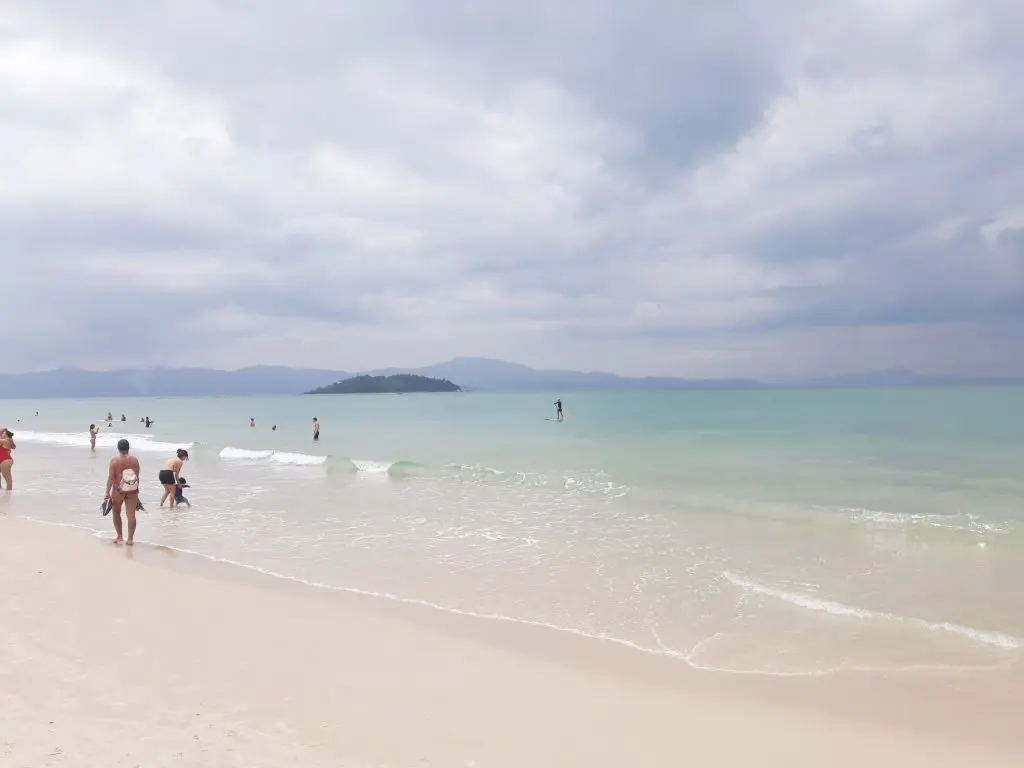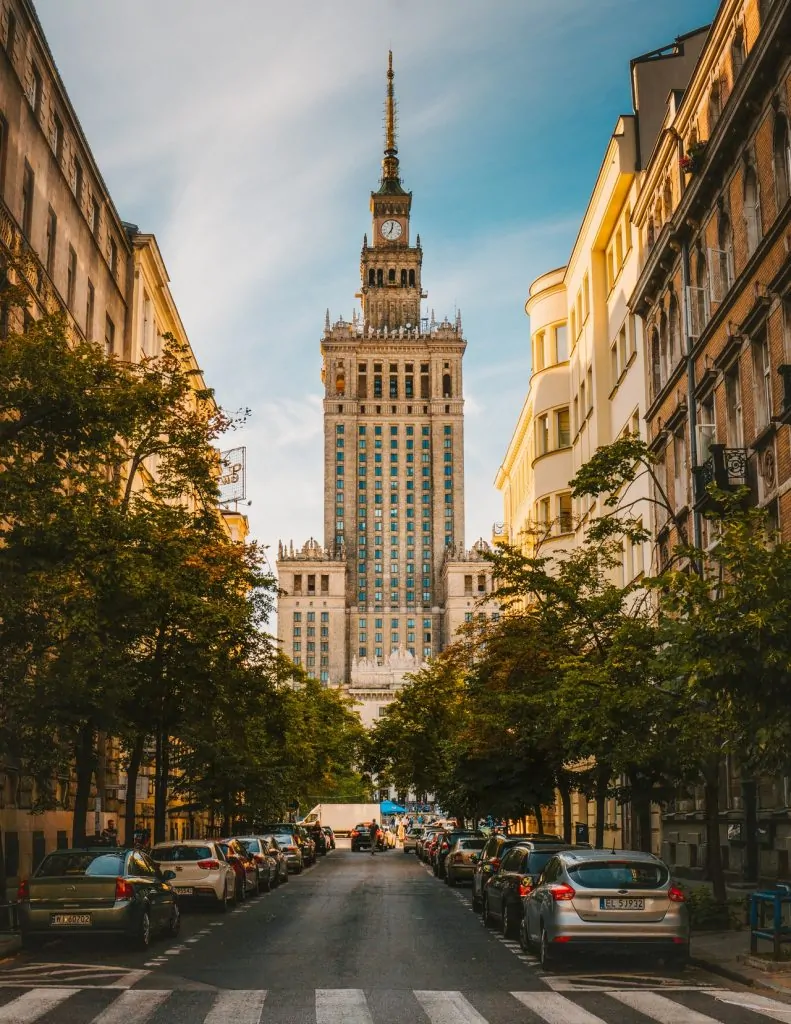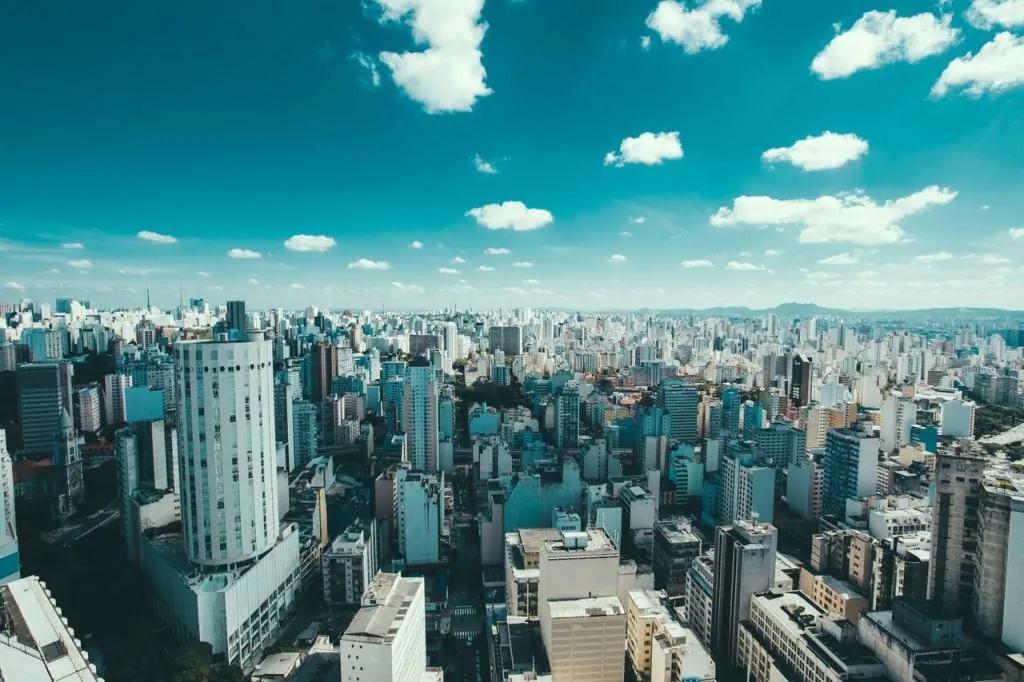US$515. That’s the monthly cost of living in one of the best cities to retire in Peru.
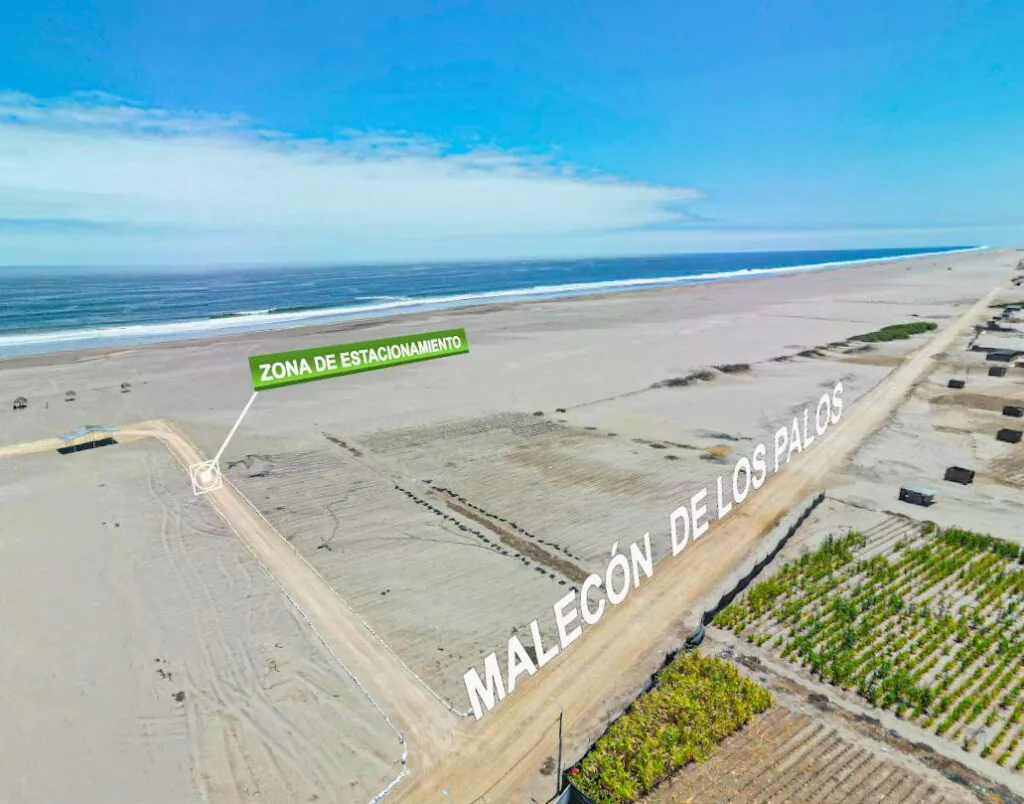
That is the full cost, with:
- Ocean views
- Year-round perfect weather
- Modern healthcare
That’s 76% less than Miami. 83% less than San Diego.
In 7 years living here, Americans save enough to buy a second home — in cash.
But…
Could you live without Amazon Prime?
Without drive-thrus?
If you answered no, stop watching.
But if cutting your retirement costs by 67% sounds appealing, I’ve done the work for you.
I’ve:
- Measured the cost of living in Peru’s best retirement destinations.
- Checked the opinions from locals,
- Plotted the hospital ratings and quality scores for each city,
- Analyzed weather patterns, airport access, and proximity to coastlines.
Here’s what surprised me: my #1 recommendation isn’t the cheapest city.
My top two picks cost slightly more but offer something money simply can’t buy. And one popular expat destination with beautiful beaches? I ranked it near the bottom for a reason most YouTube channels never mention.
Let’s explore Peru’s 7 best cities for expats, starting with…
7th Place: Cusco
Oh… Cusco… You’ve seen the photos. You’ve heard the stories. Almost everyone who visits Peru makes a stop here for 2-3 days to see Machu Picchu. But what about living here year-round? Is the ancient Incan capital a practical retirement option?

Cost of Living in Cusco
At $779 per month including rent, Cusco offers major savings compared to American cities. For that price, you can walk out your door to see colonial architecture that’s stood for centuries.

Altitude Challenges in Cusco
But here’s what most retirement videos never mention: Cusco sits at 11,152 feet above sea level. This creates a serious challenge – altitude sickness affects more than half of all newcomers. Symptoms include headaches, nausea, and fatigue. While most people adjust eventually, the high altitude can worsen existing health conditions, a crucial factor for retirees.
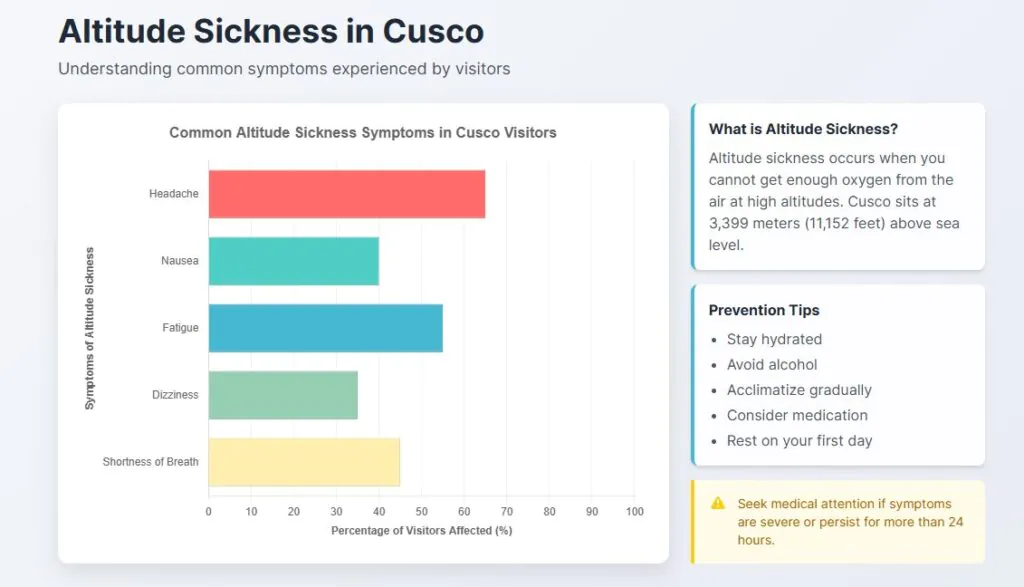
Healthcare in Cusco
Speaking of health, Cusco’s healthcare infrastructure scores a decent 6 out of 10 – not the best, but also not the worst. The Hospital Regional Cusco is one of Peru’s better hospitals, with 341 beds and 7 operating rooms. It is considered the 5th best equipped hospital in the country
Transportation Access in Cusco
Connectivity is also another point where Cusco is not bad, but also not among the best. The city has good air links with frequent flights to Lima taking just over an hour from Alejandro Velasco Astete International Airport. But if you need to travel by car, you’re looking at a 19 to 21-hour drive to the capital. You’re essentially landlocked in the mountains.
Weather in Cusco
The weather presents another not bad, not perfect factor. Temperatures rarely exceed 21C year-round, with the warmest months averaging just around 10-11C. There’s also a distinct rainy season from November to March with significant precipitation.
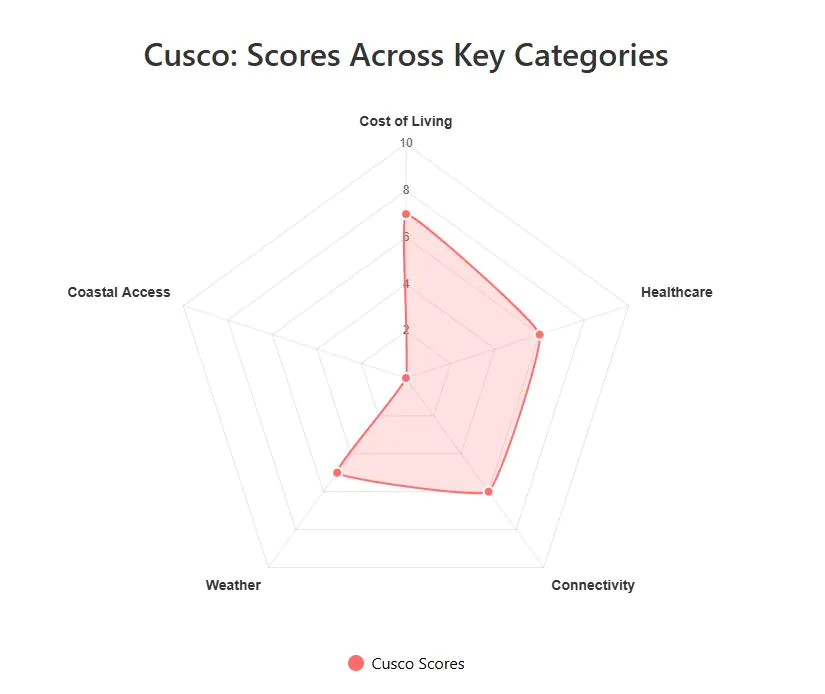
Tourism Impact and Coastal Access in Cusco
The tourism-dominated economy creates both benefits and drawbacks. English services are widely available, but popular spots and restaurants are often crowded with tourists. One major limitation: Cusco scores 0/10 for coastal access. There are no beach days there, and the ocean is very, very far. Instead, you have views of the Andes mountains — beautiful, but a significant lifestyle adjustment if you’re dreaming of coastal living.

Cusco’s not for everyone. It’s for those who prefer countryside over beaches. But for the right person – someone comfortable with mountain living — it offers an incomparable cultural experience at a fraction of U.S. prices.
And by the way, as a South American myself, I am eager to do more articles about my continent, so tell me in the comment section which country you would want me to cover next.
6th Place: Mancora
Mancora’s next on our list—a beach town that’s all about the classic retirement dream. Wake up to waves crashing, with temperatures rarely dipping below 24C. That’s the vibe Mancora’s got going.

Cost of Living in Mancora
A local summarized to us why Mancora is so loved:
“Mancora has the coolest vibe of any place I’ve ever been. You can stay and eat for really cheap.”
At just $629 monthly including rent, Mancora ranks as Peru’s 6th best retirement destination. It scores perfect 10s for both weather and coastal access.
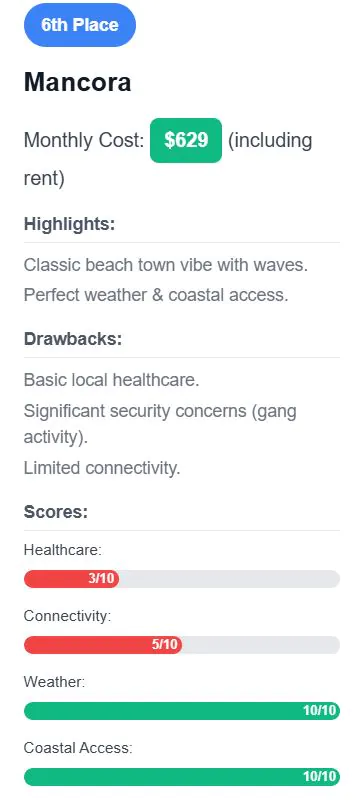
Climate and Beaches in Mancora
The climate is what people who enjoy warm weather would love – an average annual temperature of 26C, with more than 300 sunny days per year. The town features some of Peru’s best beaches with consistent surf breaks.
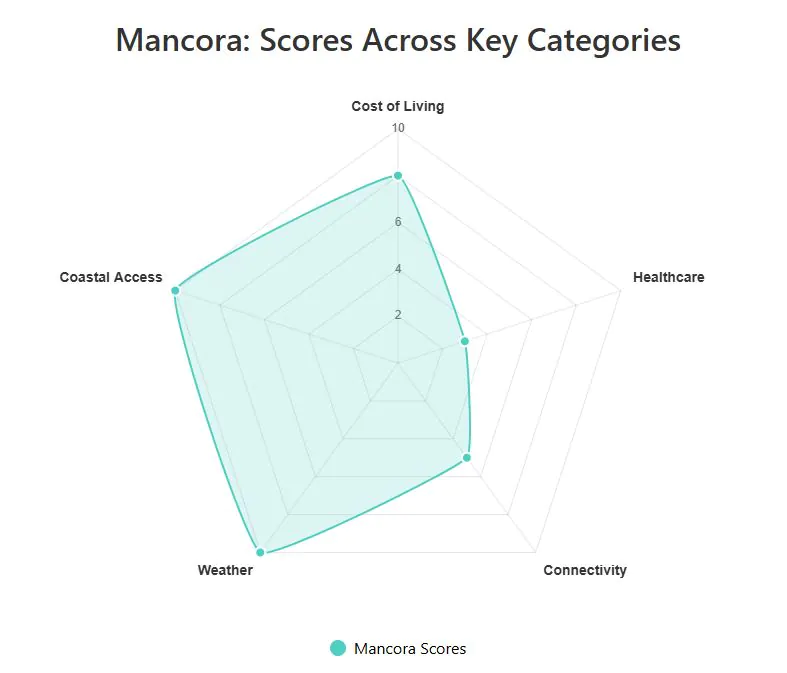
Healthcare Limitations in Mancora
But underneath Mancora’s relaxed vibe, there’s a tougher reality. Mancora scores just 3/10 for healthcare infrastructure. There is only a small public hospital and a couple of private clinics like San Pedro Clinic and Medical Center Mancora. For serious health complications, patients typically get transferred to larger cities like Talara, Tumbes, or Piura – hours away by car.
Transportation and Safety Issues in Mancora
Connectivity is another major challenge, scoring only 5/10. The closest airport is in Talara, an hour’s drive away, with limited flight options to Lima. Perhaps most concerning is what local sources consistently report about security. The town is “no longer considered safe” according to residents. In fact, the northern region of Peru generally faces issues with gang activity, creating risks that Youtube videos rarely address.
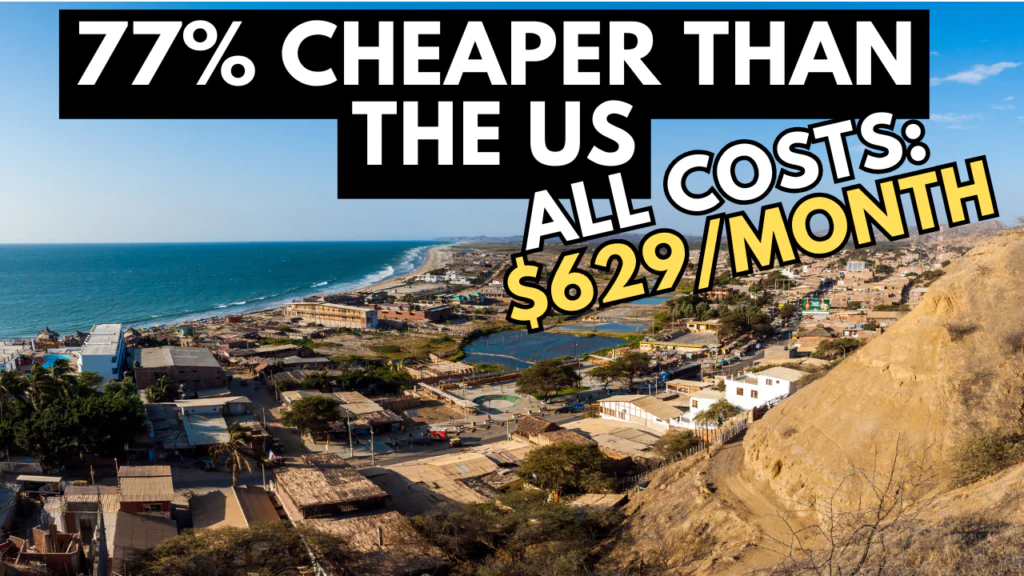
While the $629 monthly cost sounds attractive, the isolation means you’ll pay higher prices for imported goods and have limited access to services retirees often need. The perfect climate and beaches make it a great vacation spot, but the data and opinions from locals suggests it’s far from ideal as a retirement destination.

The next city is completely different from Mancora, in size, climate, and qualities.
But before I reveal it, I have some really good news.
FREE FOR A LIMITED TIME: Grab your Expat Wealth & Lifestyle Compass ($108 value) today! Includes our 74-page guide of Affordable European Cities, our Zero-Tax countries report, and our expat checklist. https://bit.ly/ExpatWealthLifestyleCompass Join us here before this offer ends.
5th Place: Arequipa
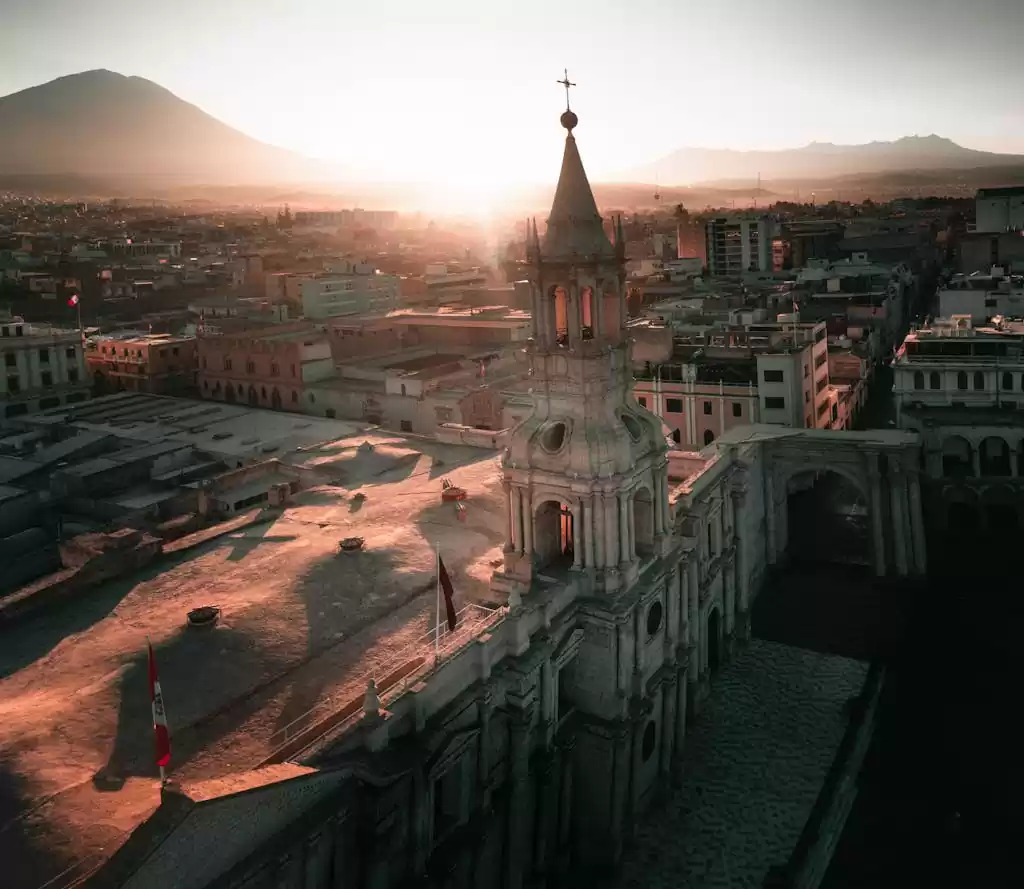
Also called “The White City” because of its colonial buildings made from a white volcanic stone called sillar. This city offers something different – it is not a coastal town. In fact, it is 2 hours from the closest beaches. But there are other distinct advantages.
Cost of Living in Arequipa
At $732 per month including rent, Arequipa offers real savings – about 40% less than living in Lima while still maintaining strong infrastructure. This combination of city amenities without the high price tag makes it attractive for people on fixed incomes.
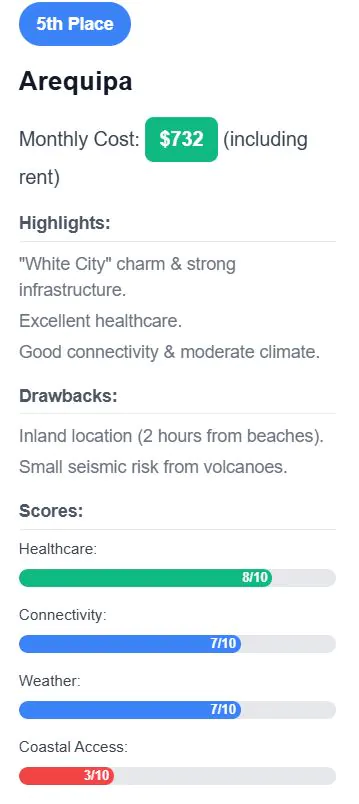
Healthcare in Arequipa
Healthcare is where Arequipa really shines, scoring an impressive 8/10 with multiple private hospitals rated above 3 stars on Google Maps.
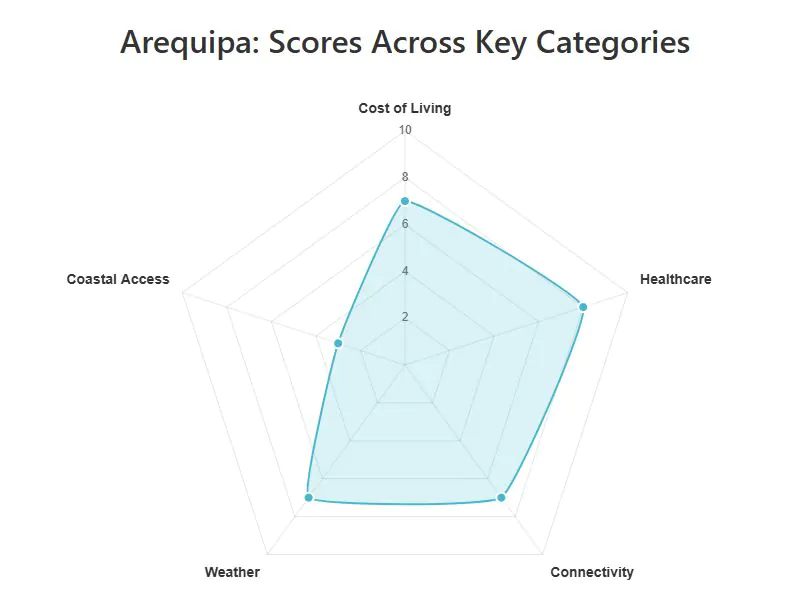
Transportation and Weather in Arequipa
Getting around from Arequipa is straightforward, earning a solid 7/10 for connectivity. The Alfredo Rodriguez Ballon International Airport is just 8 kilometers from the city center, with multiple daily flights to Lima taking under 2 hours.
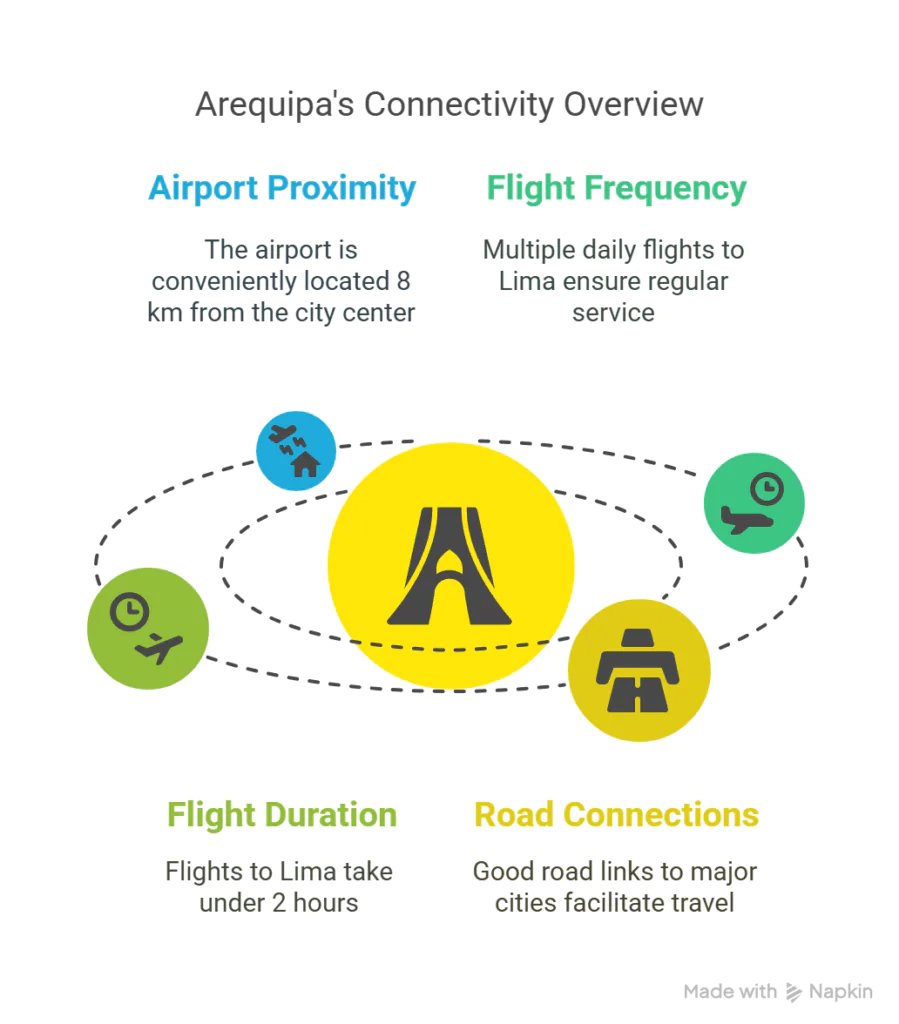
Temperatures average between 14-22C year-round with minimal rainfall during most months, earning a 7/10 score. The city experiences a wet season from January to March, The rest of the year is mostly dry, especially May through August.
Geography and Local Opinion in Arequipa
Unlike coastal options, Arequipa sits inland at 7,661 feet elevation, resulting in a 3/10 score for coastal access – it is not that far, but not close either. The city’s landscape is dominated by three impressive volcanoes including the Misti
This is what a local told us about the city:
“Arequipa is warmer, has a more relaxed vibe, and is less touristy. It is also cheaper than Lima.”
Arequipa ranks 5th because it offers excellent healthcare and infrastructure, but lacks the coastal appeal that many retirees prioritize.

4th Place: Lima – Capital Comforts, but Not That Cheap
Landing at number four on our list is Peru’s largest metropolitan area, with more than 10 million residents. This city offers everything you’d expect from a major metropolis – but that comes with a price tag that keeps it from ranking higher.
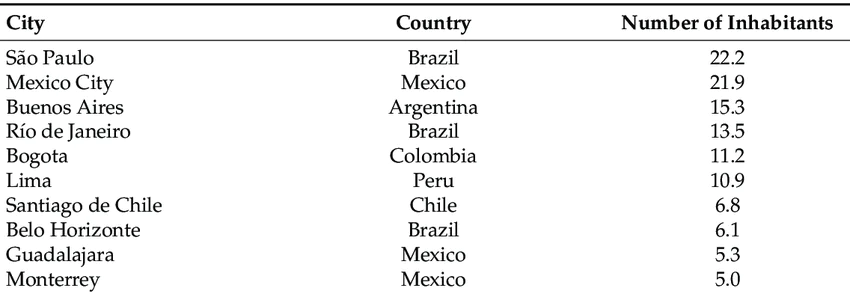
Cost of Living in Lima
At $1,216 per month including rent, Lima costs more than double our most affordable option. That’s significant, but still represents a 50-65% savings compared to similar coastal cities in the United States.
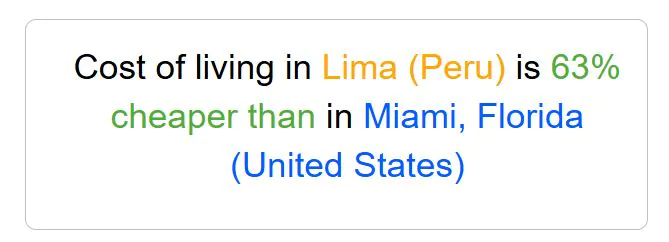
A one-bedroom apartment in the district of Miraflores (one of the most recommended places to live) costs around $523. Quieter, less upscale districts like Jess Mara, Magdalena del Mar, or San Miguel offer even more affordable options.

Healthcare in Lima
Lima earns a perfect 10/10 for healthcare infrastructure. The city houses numerous high-quality private hospitals including Clnica Anglo Americana, Clnica San Felipe, and Clnica Ricardo Palma. Most expats choose international health insurance to access these private hospitals with their shorter wait times and modern equipment.
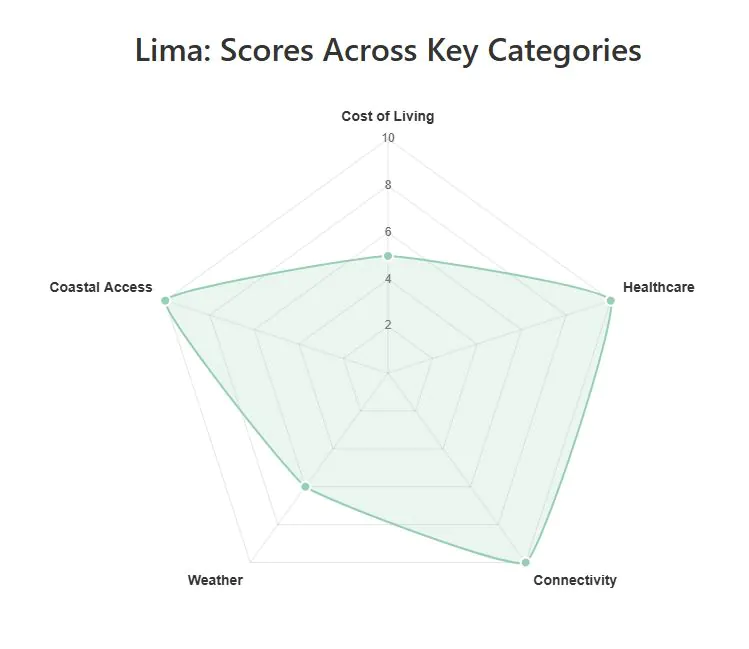
Transportation and Coastal Access in Lima
Connectivity also scores a perfect 10/10. Jorge Chvez International Airport sits just 8 kilometers from the city center, offering daily flights to all major Peruvian cities, and to multiple international destinations.
The Pacific coastline access earns another 10/10, with popular districts like Miraflores and Barranco offering ocean views and beach access. Punta Hermosa beach is just a 40-minute drive away, with summer water temperatures averaging 20C – comfortable for swimming.
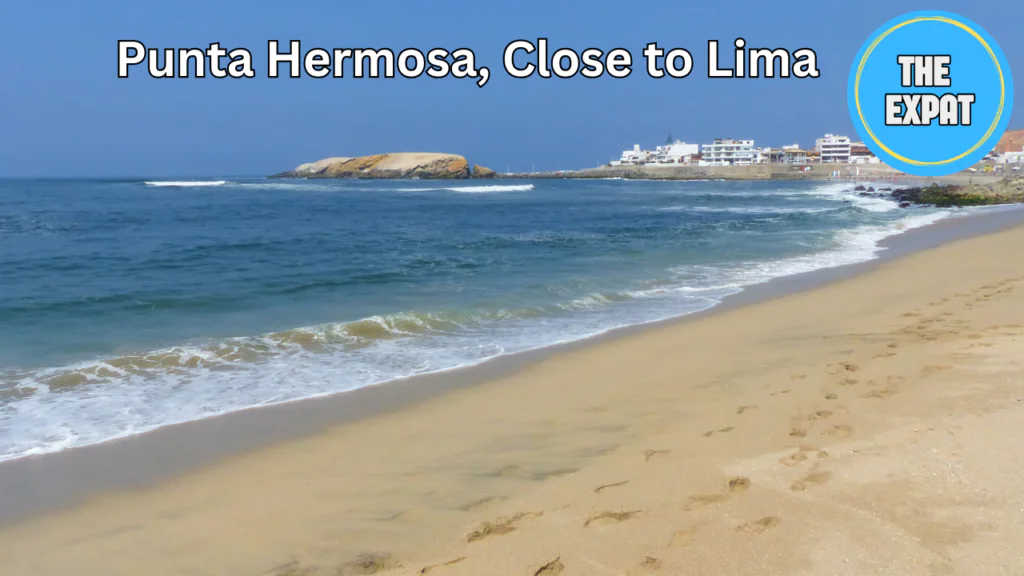
Weather Challenges in Lima
Lima’s weather presents a surprising limitation. Despite the coastal location, a persistent marine layer locals call “la gara” creates overcast conditions for months at a time. This brings high humidity (averaging 82% annually) and frequent fog – despite the high humidity, Lima has very, very little rainfall.

Safety and Traffic in Lima
Talking about safety, it varies dramatically by district. Miraflores and San Isidro offer first-world security but at premium prices. Meanwhile, many other areas struggle with significant crime issues. The huge differences between districts like Miraflores and Santa Anita makes district selection critical for safety.
This is what a local told us:
“Lima is like any other large city, it has its nice & ugly places, for the most part the dangerous places are very minimal. Miraflores, San Isidro and Barranco are very safe.” In addition to its safe neighborhoods, Lima boasts a rich cultural scene with numerous museums, galleries, and vibrant street art. As one of the best Spanish speaking cities to visit, it offers a unique blend of history and modernity, making it an attractive destination for travelers. Food enthusiasts will also find a culinary paradise, with world-renowned restaurants showcasing the best of Peruvian cuisine.
Traffic congestion ranks among South America’s worst, with locals describing “heavy traffic” as a major quality of life problem even in upscale neighborhoods.

The data clearly shows why Lima ranks 4th despite its higher cost of living. For those who prioritize world-class healthcare, international amenities, and a cosmopolitan lifestyle over cost savings, Lima is a good option.
3rd Place: Chiclayo

Coming in at number three is Chiclayo – a placement that might surprise many and will likely generate some debate in the comments. Known as the “Capital of Friendship” for its notably welcoming locals, this northern city offers a compelling balance of affordability and amenities that earned it a spot in our top three.
Here’s an interesting fact: Chiclayo is the city where the newly elected Pope Leo the XIV served as a Bishop for the longest time.
Cost of Living in Chiclayo
At just $745 per month including rent, Chiclayo offers roughly 40% cost savings compared to Lima. A one-bedroom apartment typically costs around $311-374 monthly, leaving room in your budget for dining out and other activities.
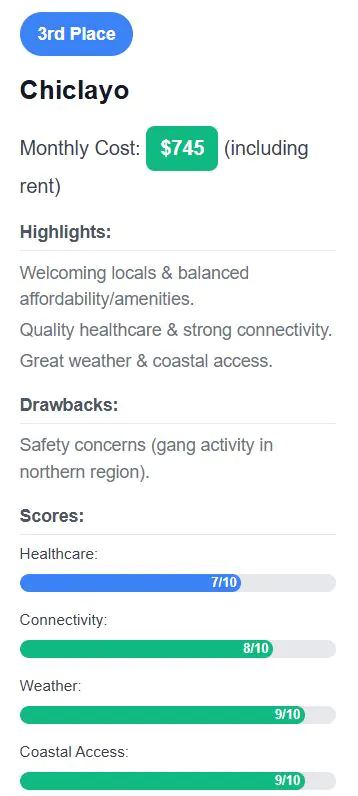
Healthcare in Chiclayo
The healthcare situation scores 7/10, with several good quality medical facilities. The Hospital Regional de Lambayeque ranks among the 15 best hospitals in the entire country.
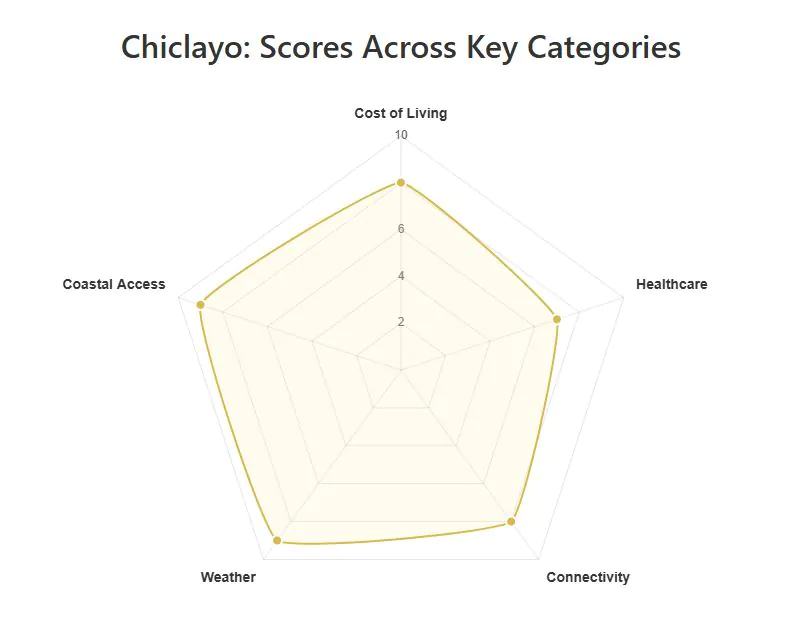
Transportation in Chiclayo
Connectivity is strong, scoring 8/10. The Capitan FAP Jose A. Quiones Gonzales International Airport sits just 2.5 kilometers from the city center – that’s only a 6 to 10-minute drive. Daily flights to Lima take just over an hour and 20 minutes, making connections to international destinations straightforward.
Weather and Coastal Access in Chiclayo
The weather is a major selling point, earning a 9/10 score. Temperatures average between 20-29C year-round with remarkably low rainfall – annually just 0.29 inches. Chiclayo has a very dry climate. Even March, its wettest month, has less than half an inch of rain.

Coastal access is another significant advantage. Located just 13 km from the Pacific Ocean, Chiclayo scores 9/10 in this category. Beautiful beaches like Pimentel are within a 15-minute drive. Many of these coastal villages feature golden sands and close to the beach you can find nice cevicherias – and you absolutely MUST try ceviche.
Safety Concerns in Chiclayo
However, there’s an important drawback: safety concerns in some areas. While central, tourist-friendly areas remain relatively safe, the outskirts requires caution.

This explains Chiclayo’s third-place ranking: it offers an excellent balance of cost, amenities, and climate.
2nd Place Among the Best Cities to Retire in Peru: Tacna
Now at number two on our list is this city just 35 kilometers from the Chilean border. Tacna offers the lowest cost of living in our rankings at just $515 per month including rent. As I said in the beginning, that’s 77% less than Miami or San Diego. This makes Tacna possibly the best financial value in all of Peru.
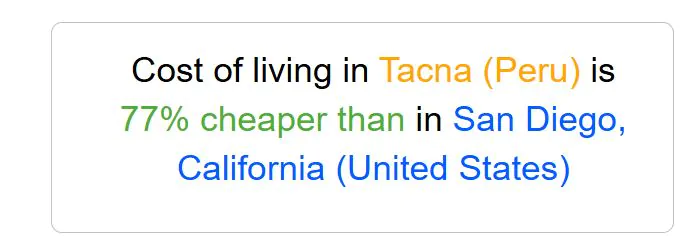
Cost of Living in Tacna
The numbers tell a clear story. A one-bedroom apartment in the city center costs around $274-311 per month, leaving plenty of room in your budget for dining out, entertainment, and travel. Even with a modest pension or savings, you can live very comfortably here thanks to these remarkably low costs.
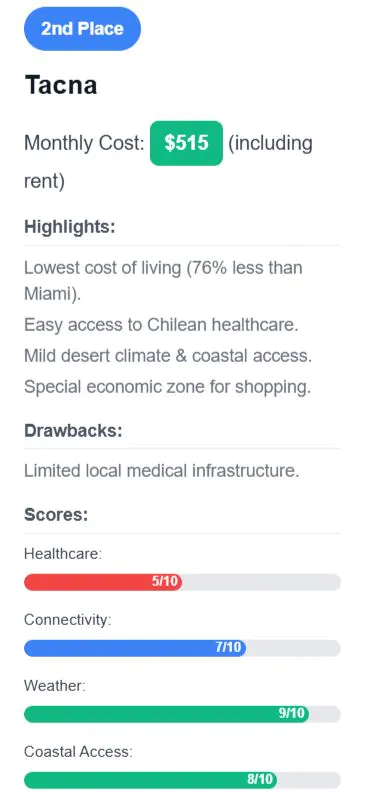
Healthcare Access in Tacna
But Tacna’s position as a border town creates a unique advantage that goes beyond just affordability. With a proper private insurance, you get easy access to Chilean healthcare just across the border. This offsets the city’s limited local medical infrastructure, which scores only 5/10.
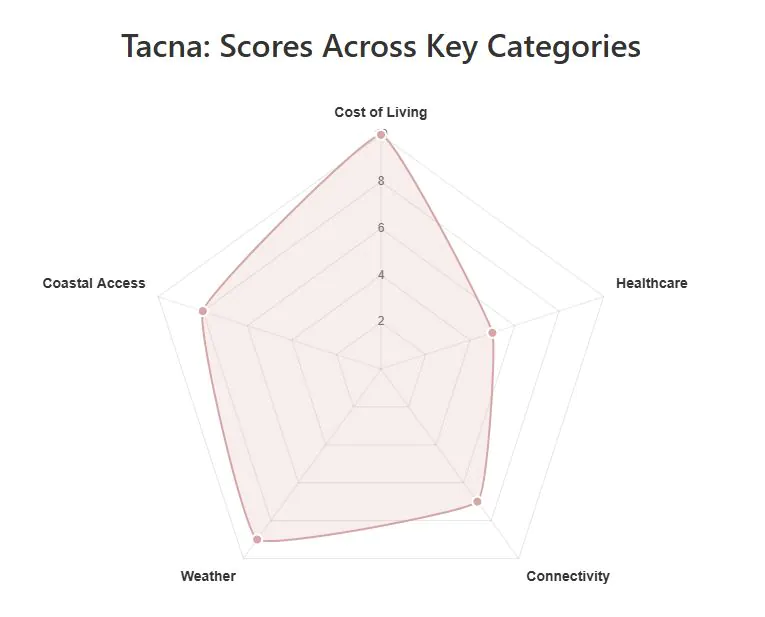
Transportation in Tacna
Connectivity is solid at 7/10. The Carlos Ciriani Santa Rosa International Airport has between 6 to 7 daily flights to Lima, operated by 2 different airlines. The real advantage is access to Chile’s transportation network, which opens up additional travel options by the way, I covered retirement Chile in another article, so check it later.
Weather and Coastal Access in Tacna
The weather scores an impressive 9/10 with mild temperatures averaging 14-24C year-round in this desert climate. Annual precipitation is just 0.68 inches. You’ll experience almost no rainfall most of the year.
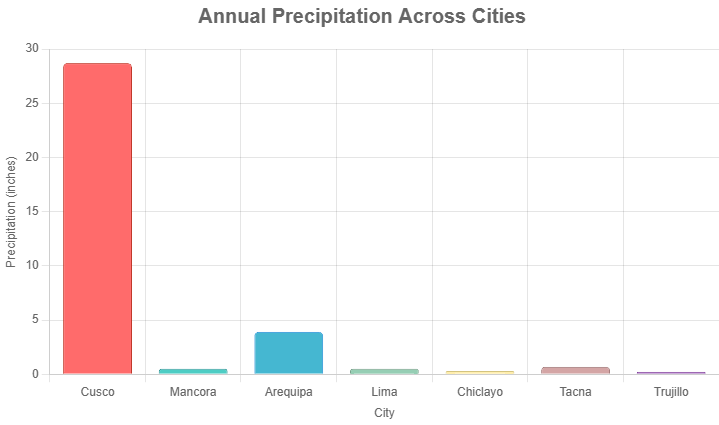
Located less than one hour from the Pacific Ocean, Tacna scores 8/10 for coastal access. Beaches like Tomoyo beach are within easy driving distance.

Economic Benefits and Local Opinion in Tacna
One significant advantage rarely mentioned is Tacna’s special economic zone status. It has reduced taxes and prices on electronics, clothing, and imported goods. The city lacks the hectic energy of Lima or Arequipa, creating a more relaxed everyday experience.
This is what a local told us:
“Tacna is nice and more affordable than Cusco. The city attracts Chilean tourists for its cheap medical services, especially dentists and ophthalmologists.”

And that is why Tacna ranks 2nd overall: its unbeatable cost of living combined with good weather and coastal access outweigh its limited healthcare infrastructure. For budget-conscious retirees willing to trade some healthcare convenience for significant savings, Tacna offers exceptional value.
1st Place: Trujillo – The Complete Package
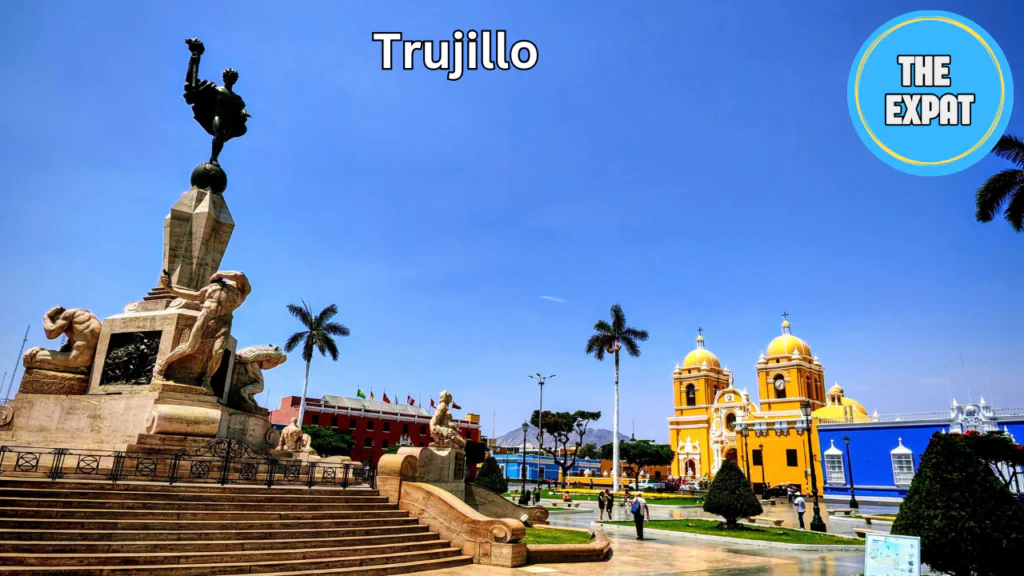
And finally, taking the number one spot on our list is Trujillo. Founded in 1534 and named after a city in Spain, this coastal gem combines colonial appeal with modern comforts to earn the top ranking in our analysis.
If you read my article about the best places to travel during the northern hemisphere summer, you already know something about Trujillo.
Cost of Living in Trujillo
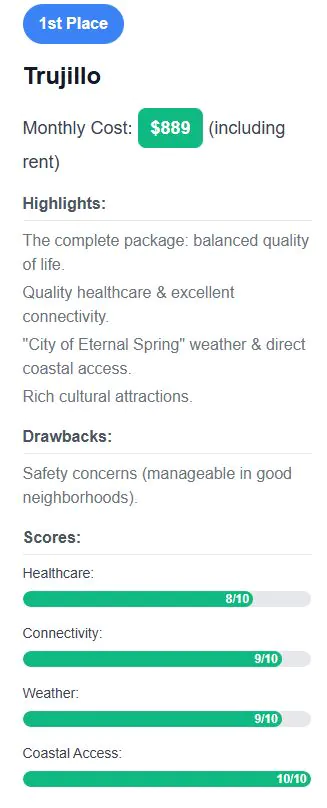
At $889 per month including rent, Trujillo isn’t the cheapest option in Peru – it costs more than Tacna’s bargain $515 a month. But its balanced scores across all categories create the strongest overall package for retirees. This is a case where paying a bit more gets you better quality of life.
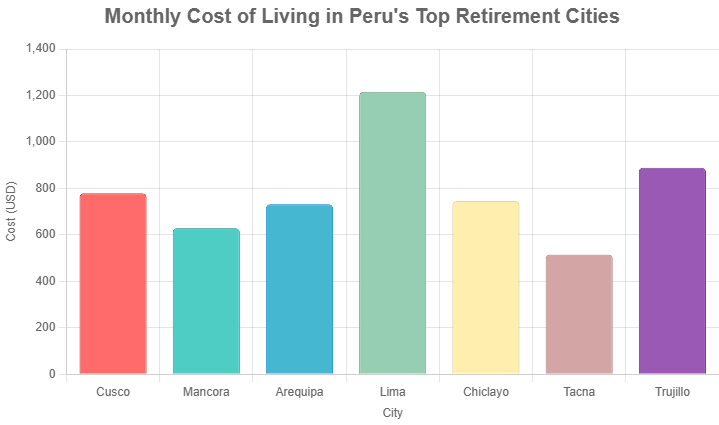
Healthcare in Trujillo
The healthcare infrastructure scores 8/10 with multiple private hospitals with good rates. According to our research, Trujillo offers “quality healthcare in private clinics and hospitals” with “well-qualified doctors and up-to-date advanced technologies.” The High Complexity Hospital Virgen de la Puerta is one of the best evaluated in its category in the entire country. Patients praise its cleanliness and staff.
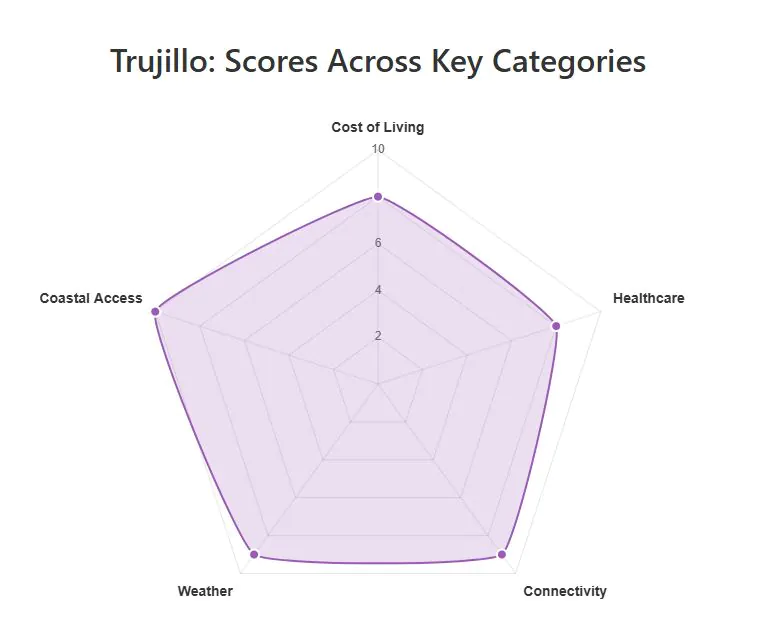
Transportation in Trujillo
Connectivity is excellent at 9/10. The Capitn Fap Carlos Martnez de Pinillos International Airport sits just 6 miles from the city center – a 25-minute drive. Daily flights to Lima take only 1 hour and 20 minutes. Road travel is also possible, with the 550-kilometer journey to Lima taking about 8 hours and a half.
Weather in Trujillo

The weather is nearly perfect, scoring 9/10. Locals call Trujillo the “City of Eternal Spring” for good reason. Annual precipitation is remarkably low at just 0.21 inches, with “almost never” a rainy season.
Coastal Access and Attractions in Trujillo
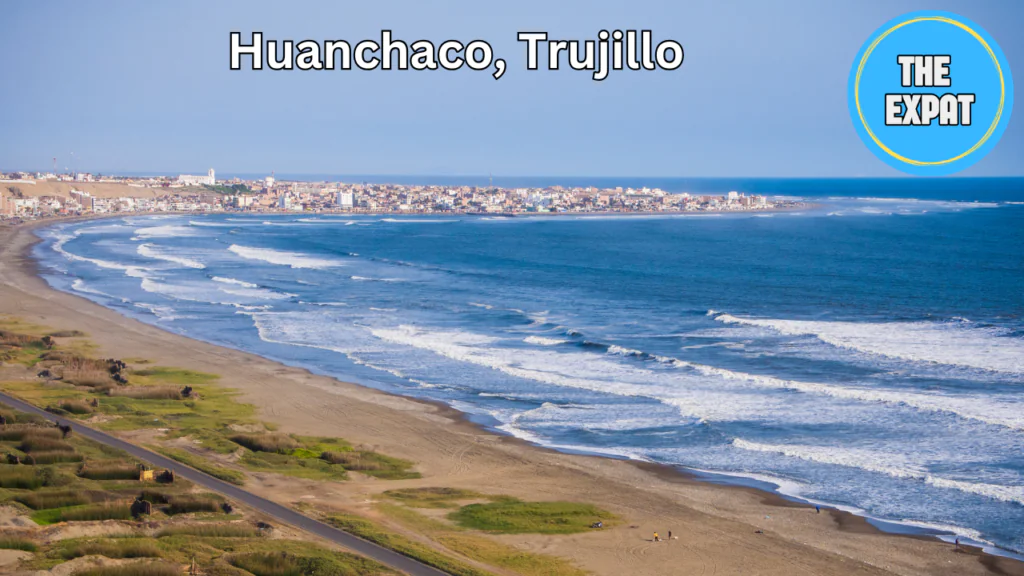
Located by the Pacific coast, Trujillo scores a perfect 10/10 for coastal access. Beautiful beaches like Huanchaco are just 13 kilometers away – about a 15-minute drive. In Huanchaco, you can observe the traditional caballitos de totora, ancient reed boats used by local fishermen for centuries, while enjoying fresh seafood.
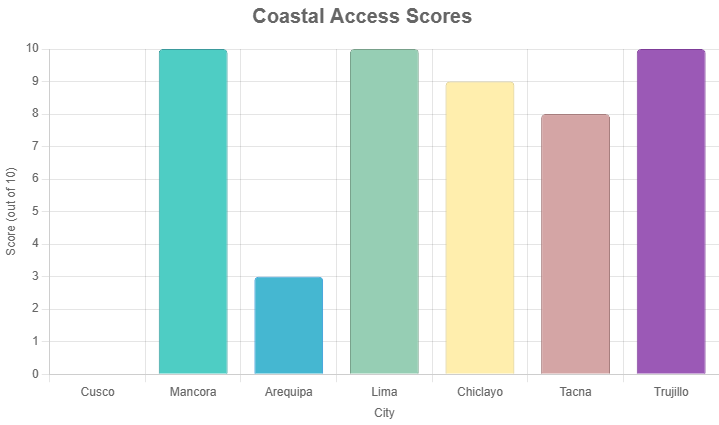
The city offers rich cultural attractions including Chan Chan (the largest pre-Columbian city in South America) and the Temples of the Sun and Moon from the Moche civilization.
Safety Considerations in Trujillo
There is one significant drawback worth noting: safety concerns in Peru’s northern region require that you choose a good neighborhood.
Why Trujillo Ranks First Among the Best Cities to Retire in Peru

So Trujillo ranks 1st overall because it offers the most balanced combination of affordability, infrastructure, climate, and coastal access among all Peruvian cities. None are perfect, but Trujillo comes closest with strong scores across every category that matters.
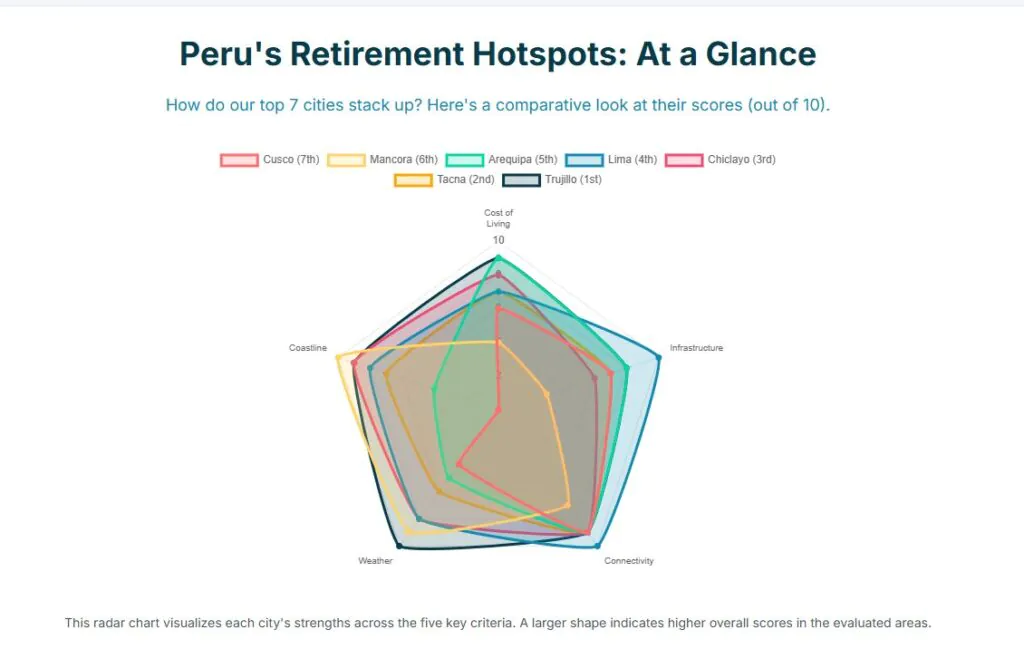
Additional Resources
But do you know which other part of the world has VERY low living costs, and incredible quality of life? Southern Europe!
It was thinking about you that I compiled my MOST IMPORTANT video ever, where I selected the best cities to move to in Europe – it is by far our greatest video, and you can watch it below.
Levi Borba is the founder of expatriateconsultancy.com, creator of the channel The Expat, and best-selling author. You can find him on X here. Some of the links above might be affiliated links, meaning the author earns a small commission if you make a purchase.
